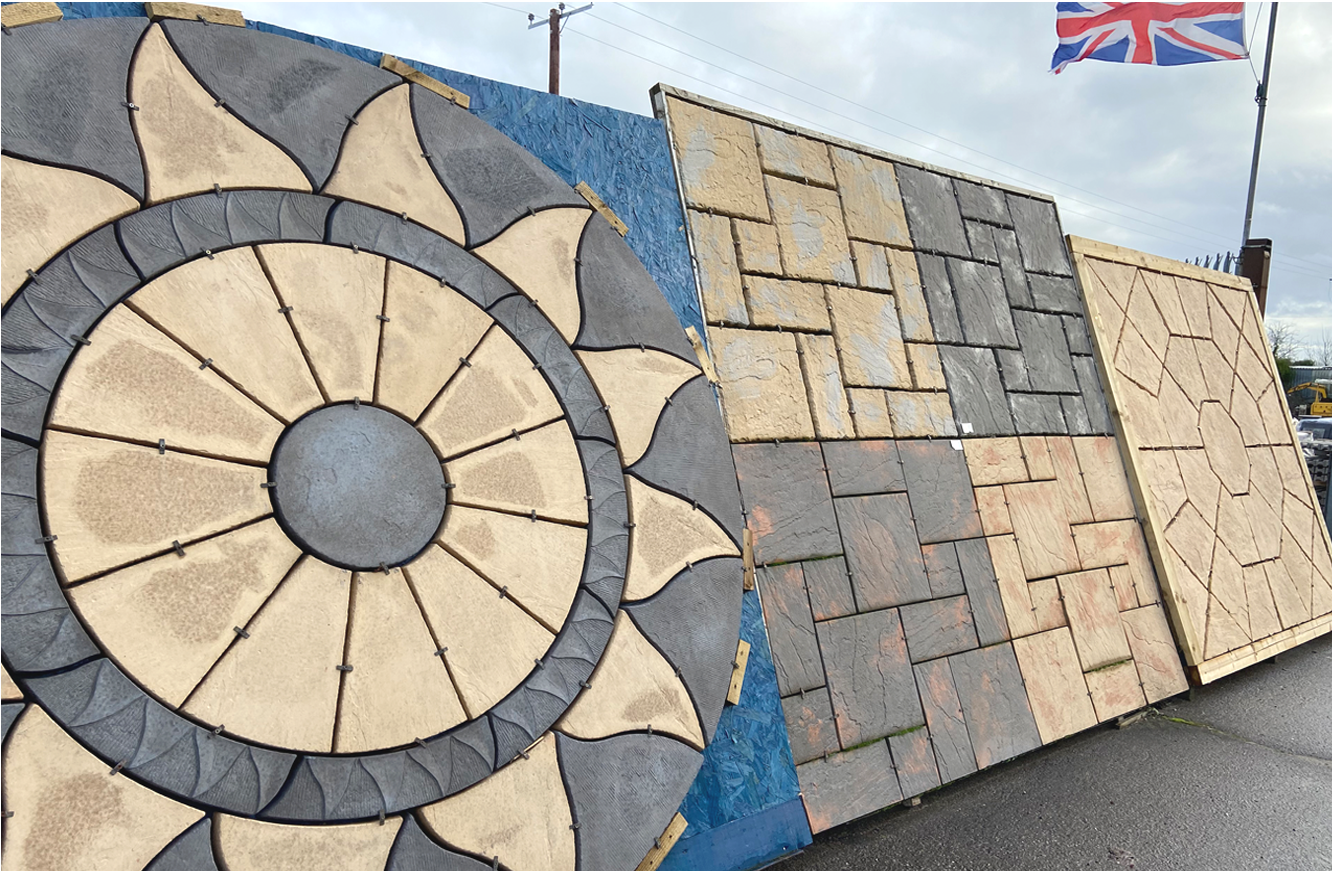
![]() > Advice Guides > Shed Installation
> Advice Guides > Shed Installation
Natural Stone Installation Guide
Tips and suggestions for laying Natural Stone Paving – if unsure we recommend you always seek professional advice.
The paving you have chosen should be seen as the “top dressing” to your patio, but the key to achieving the visual result that enhances your garden is to get the preparation, installation and finishing correct.
Characteristics of Natural Stone Paving:
As part of the production process, natural stone will contain blemishes, veining, small chipping and small holes. All of which are natural characteristics of the stone and are perfectly normal and not a sign of any fault in the product. Most chips will not be visible one installed and pointed, ordering a little bit extra will allow for wastage, cuts and pieces you may not wish to use. If using multiple packs, open all packs and randomly select from each pack to blend colour variances.
All Natural Stone varies in colour, texture, markings and touch. These variations are what give natural stone it’s uniqueness and add to its appeal. Small samples will not always given an accurate reflection of how the patio will look once finished, brochure pictures will not always give accurate colour variations.
Preparation and Drainage:
- Please check suitability of the product before purchasing and laying.
- Check quantities required and order all materials to complete your project at the same time.
- Drain away from the house wherever possible. If the design of the area does not allow this, then drainage channels along the length of the property must be installed.
- Paving should be laid with a fall.
- Surface level of the paving should be a minimum of two courses below the damp proof course of the property.
Laying:
- It is recommended that it is laid on a full mortar bed, with no gaps or voids beneath.
- Mortar to be mixed at the ratio of 5:1 sharp sand and cement.
- The depth of the mortar bed to be 35mm – 55mm deep.
- A slurry primer is recommended to be applied to the underside of all Natural Stone paving but is essential for Smooth Natural Sandstone and Granite paving prior to laying to approve adhesion.
- Peg out several string lines to establish the desired level of the patio, incorporating a slight fall for water to run for drainage. Start laying from a corner or straight edge.
- Continuous checking of levels should be on-going during the laying process and should be taken across the top surface profile of the slab.
- Please note – Natural Stone is laid with the narrowest surface facing the ground making an inverted ‘V’ joint.
- If using multiple packs, select randomly from each pack to blend any colour variances.
- It is important to keep the joints as evenly spaced as possible, gently shuffle the slab with a twist of the trowel until the joints look even.
- Jointing can be done using traditional 3:1 sand and cement mix. There are a number of resin etc., jointing products on the market, but please follow the manufacturers suggestions on use and application etc.,.
- Sealing Natural Stone will assist in the maintenance of your patio and will also help to protect your Natural Stone from staining etc.,. There are some Natural Stones which can benefit from being sealed, check with the manufacturer’s guidance information. Always follow the manufacturer’s installation advice on any product applied, as some products will change the look of the paving.
- DO NOT use acid based cleaners – these will severely damage your paving.
Benefits of using the full bed of mortar and primer are:
* Less voids beneath the slabs, which makes them more unlikely to fracture when loaded.
* Less voids beneath the slabs, therefore stopping water accumulating which could lead to subsidence or instability
* Primers or bonding agents secure paving slabs to the bedding mortar, reducing the risk of movement and therefore cracks etc.,
*British Standard 7533: Part 4 which covers the installation of concrete, natural stone flags and slabs, requires that these are laid on a “full bedding layer” giving uniform support, this applies to all classes of pavements including patios and driveways.
*The British Standard recommends that a slurry primer should be applied to the underside of all paving prior to laying to improve adhesion.*
The above information is given in good faith, but for guidance only, and we cannot be held responsible for any problems that might occur.
Get in touch
Contact us with regards to any enquiries and further information you require on our products.
We deliver to most locations in Somerset (Weston-Super-Mare, Burnham-on-Sea, Bridgwater, Taunton, Exeter, Street, Glastonbury) If you need your products delivered please contact us


